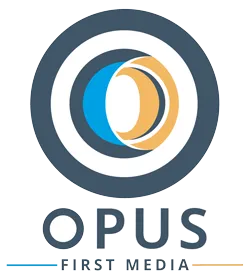Student property managers are seeing more leads than ever – from WhatsApp to web chat, phones to email – but most still struggle to convert them.
Conversations stall. Interest fades. The outcome? A growing conversion gap that quietly drains revenue, frustrates students, and overwhelms stretched teams – and risks becoming a full-blown crisis if left unresolved.
By March this year, just 36% of student beds available for the upcoming September intake had been signed – down from 46% in 2024, and the lowest level since records began, according to data from StuRents. With peak season now in full swing, that early lag reveals a deeper issue: demand isn’t the problem – conversion is.
Much of this lead inflation is driven by multi-channel engagement. Students expect to connect via WhatsApp, webchat, social DMs, email, and phone.
DISJOINTED RESPONSES
But with more touchpoints comes more complexity. A student might start with a WhatsApp query, follow up by email, and call to book – yet receive inconsistent or disjointed responses.
It’s an obstacle student accommodation providers are now being forced to confront head-on.
The volume of leads is up – and so is the friction. Through our work with student housing providers, we have detected that many serious leads are not guided properly through the conversion process.
This becomes costly during the July–August peak, when enquiry volumes surge and teams are stretched thin. This creates a gap that allows prospective students to disengage without being converted.
It is easy to observe the impacts: missed revenue opportunities, longer leasing cycles, and dissatisfied students searching for other renting options. Every missed or unanswered conversation is friction in the fluid and responsive renting experience.
THE CONSEQUENCES
Beyond service, these gaps carry serious financial consequences. Student housing marketers invest heavily in lead generation, but the return is undermined when leads stall in overloaded inboxes or under-resourced teams.
That’s why an increasing number of providers are plugging gaps not by hiring more staff, but by implementing smarter infrastructure.
One UK student accommodation provider, Downing Students, integrated conversational AI across their digital journey and saw a 564% increase in lead capture accuracy and volume within 30 days.
Crucially, this wasn’t just about scale – it was about retention. Keeping high-intent students engaged through instant, consistent touchpoints.
SECTOR-WIDE PATTERN
This isn’t unique to student accommodation, Build-to-Rent, co-living providers and guarantor services are also experiencing similar pitfalls.
In the first three weeks of June 2025, Housing Hand’s AI-powered communications system (across WhatsApp, webchat, WeChat, and voice via VerbaFlo) supported over 2,000 tenant conversations, automating up to 70% of repeat queries and freeing human teams to focus on high-value conversions.
What this reveals is a broader pattern: property businesses are overwhelmed not by lack of interest but by lack of flow.
FIXING THE FUNNEL STARTS WITH FLOW
Conversions don’t fail because of a single bad experience – they fail because communication breaks down somewhere between “Hi” and “I’m ready to sign.”
High-performing student housing providers are creating systemic continuity. AI-driven communication doesn’t just respond – it unifies. It makes WhatsApp messages, webchats, and follow-up calls part of one consistent conversation, not three disconnected threads.
This omnichannel approach reduces friction, minimises drop-offs, and builds trust.
DATA IS EVERYTHING
In manual workflows, tenant data is hard to capture and harder to use. Conversational systems track every query, response, and resolution – creating rich first-party data that informs smarter decisions.
One leading provider discovered many unconverted leads repeatedly asked about flexible tenancy options – this prompted a product-level policy change that boosted their lead-to-signup rate by 15-20%.
When you treat student conversations as data, better communication stops being just a task and becomes a strategy.
THE WAY FORWARD
Today’s margins are tighter, and students are pickier. To keep up, the focus has to shift from chasing lead volume to cultivating lead quality – the difference between success and failure lies in how effectively you nurture interest into action.
The winners won’t necessarily be those generating the most leads, but those keeping leads warm, informed, and moving from first message to signed lease.
Student accommodation providers will need to do more with less: fewer missed leads, smarter support, and stronger ROI from every marketing pound.
Pipelines don’t fall apart at the start; they fall apart in the silence after. Fix that, and you secure your business’s future.











